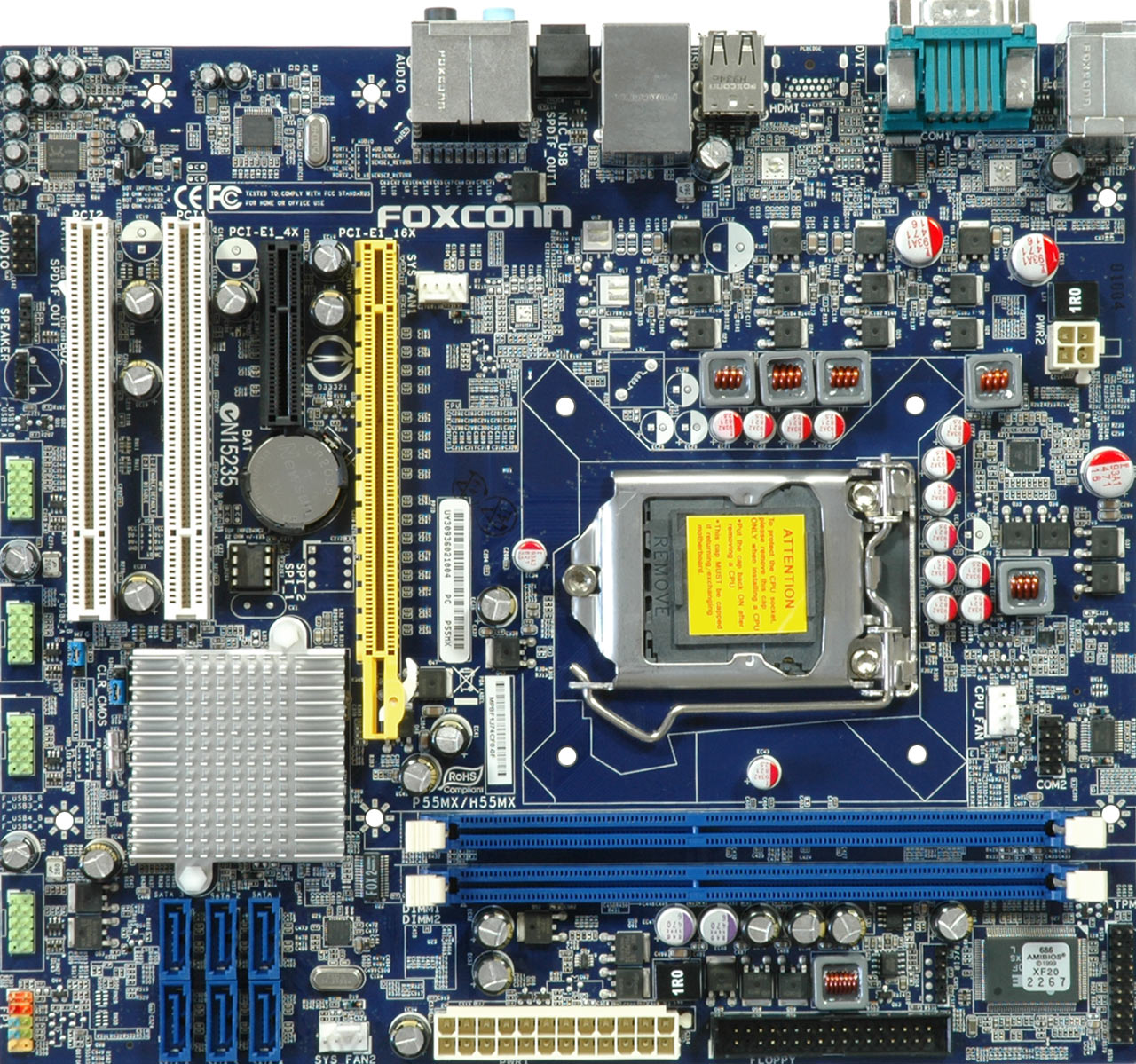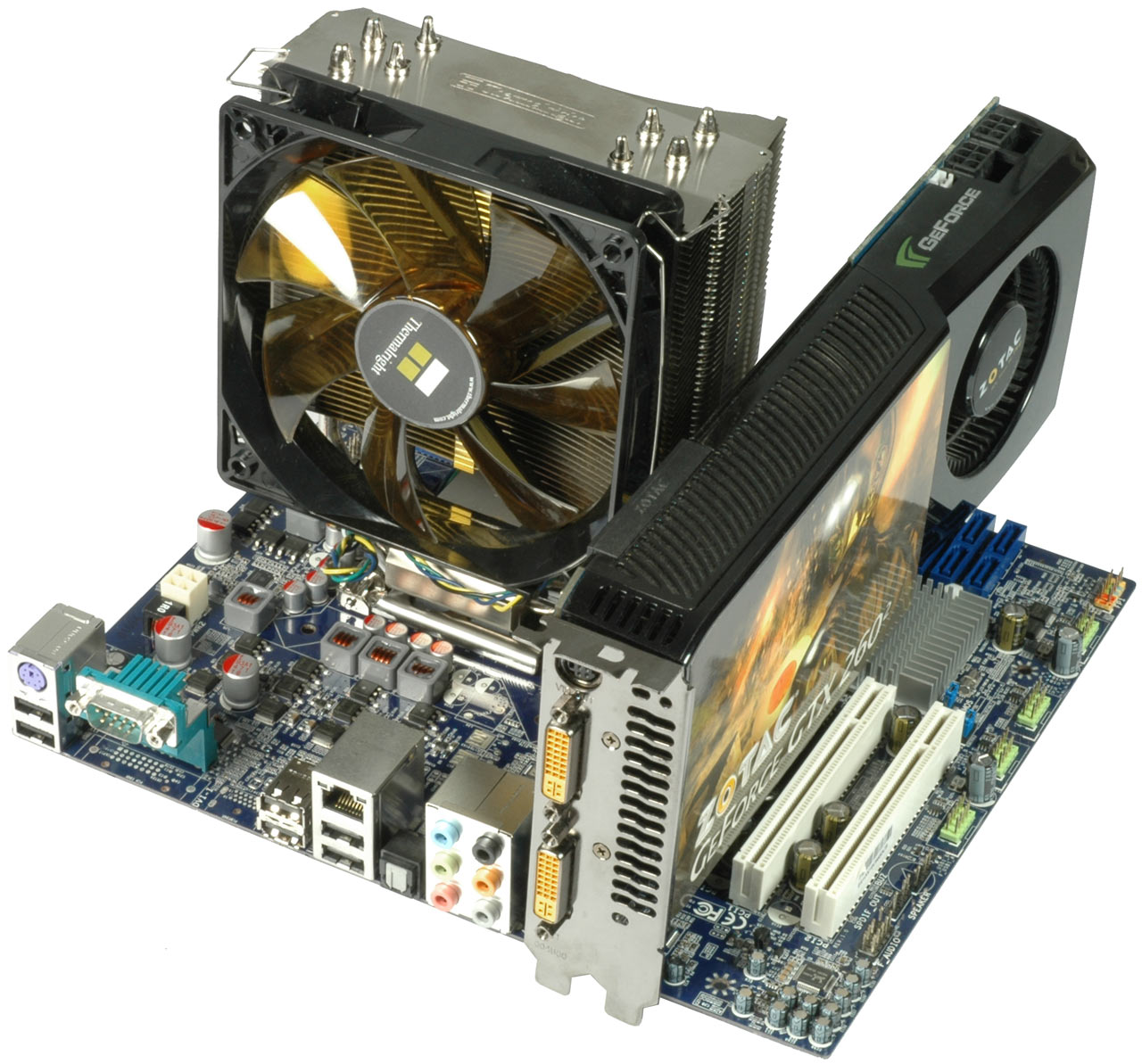Compact P55: Four MicroATX Motherboards Tried And Tested
Foxconn P55MX
Board revision 1.0; BIOS P05
Foxconn’s P55MX is a fairly typical microATX motherboard, clearly designed with tight budgets in mind. The board comes only with bare essentials. For example, while everyone else fits finesses four memory slots onto their microATX boards, Foxconn goes with two, meaning future upgrades will force you to replace your memory.
This is also the only product we reviewed that does not feature two full size x16 PCI Express slots. Rather, Foxconn offers a x16 and a x4 connector. Yet, we have to mention that the other boards discussed in this piece, which do have a second x16 slot, only route four electrical lanes to those slots. Two standard PCI expansion slots are available.
Foxconn implements all 14 USB 2.0 ports, but only six of these come installed on the I/O panel. The panel shows two open spaces for HDMI and DVI connectors, so Foxconn will probably use this same board layout for its integrated graphics-enabled H55, H57, or Q57 offerings.
The voltage regulator has the usual five phases, but this turned out to be our most power-efficient motherboard. It has the lowest system idle power and still relatively low peak power readings. This is particularly amazing, since the board comes with no power-saving features at all. Apparently, reducing complexity yields efficiency (who would have thought?). Still, the relatively low power consumption numbers were not sufficient to dominate our efficiency test. MSI’s board delivers higher performance, putting it in first place. Gigabit Ethernet, six SATA 3 Gb/s ports with AHCI and advanced RAID support, and 7.1-channel audio are all made available.


We were disappointed to see that the board doesn't support any overclocking features whatsoever. Of course, we checked with Foxconn that this is indeed intended and received the company's confirmation. Apparently, there are BIOS versions that do support basic overclocking, but the latest official release does not. The three other boards in this roundup all were capable of running our Core i5-750 at 4 GHz reliably. And we found another issue: if you install a two-slot graphics card, such as the GeForce GTX 260² with which we tested, you will not be able to use all six SATA connectors (see platform image on the bottom of this page).
Get Tom's Hardware's best news and in-depth reviews, straight to your inbox.



